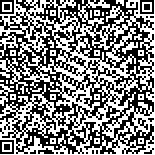|
| 引用本文: | 张芳,孙松,李超伦.黄海夏季沙海蜇食物需求的估算方法及应用.海洋与湖沼,2017,48(6):1355-1361. |
| |
|
| |
|
|
| 本文已被:浏览 2343次 下载 1511次 |

码上扫一扫! |
|
|
| 黄海夏季沙海蜇食物需求的估算方法及应用 |
|
张芳1,2,3, 孙松1,2,4,3, 李超伦1,2,3
|
|
1.中国科学院海洋生态与环境科学重点实验室(中国科学院海洋研究所) 青岛 266071;2.海洋国家实验室海洋生态与环境科学功能实验室 青岛 266071;3.中国科学院大学 北京 100049;4.中国科学院海洋研究所 山东胶州湾海洋生态系统国家野外科学观测研究站 青岛 266071
|
|
| 摘要: |
| 自20世纪90年代末起,沙海蜇频繁暴发于东亚海域,特别是8、9月份为黄海沙海蜇生物量的高峰期/大量暴发期。研究沙海蜇的大量出现对所在生态系统的影响十分必要,最直接的影响表现在对饵料生物浮游动物的影响。本文研究了黄海2006和2007年8、9月份沙海蜇的呼吸率、摄食率,估算了沙海蜇的食物需求量及其在黄海的分布格局,获得了其每天对中、大型浮游动物现存量及生产力的潜在摄食压力。结果表明沙海蜇的食物需求量的分布格局与其生物量的分布格局一致。在沙海蜇的捕获率为最大时,2006年9月上旬沙海蜇的摄食率为47.84(0.7—215.05) mgC/(m2·d)。假设中、大型浮游动物都可以作为沙海蜇的摄食对象,那么每天对中、大型浮游动物现存量及生产力的摄食压力平均分别为6.4%(0.09%—28.79%)和76.61%(1.12%—344.28%)。2006年9月下旬及2007年8月沙海蜇的食物需求比2009年9月上旬有所降低。因此,沙海蜇在暴发期间对中、大型浮游动物潜在的消耗非常大,甚至是毁灭性的。尤其是沙海蜇在高生物量站位对浮游动物的食物需求非常高,沙海蜇对浮游动物的摄食压力远超过了浮游动物本身的生产力(大于100%),这时的浮游动物远远不能满足沙海蜇的食物需求。本文的研究结果为探讨沙海蜇暴发对黄海浮游生态系统的影响程度提供了基础资料。 |
| 关键词: 大型水母 摄食压力 摄食率 呼吸率 水母暴发 |
| DOI:10.11693/hyhz20170600174 |
| 分类号:Q178.1;Q958.885.3 |
| 基金项目:鳌山科技创新计划项目,2016ASKJ02-2号;国家重点研发计划,2017YFC1404405号;中国科学院战略性先导科技专项(A类)资助,XDA11020305号;国家自然科学基金委国际(地区)合作与交流项目,31511130138号。 |
| 附件 |
|
| ESTIMATION ON FOOD REQUIREMENT BY LARGE JELLYFISH NEMOPILEMA NOMURAI IN SUMMER |
|
ZHANG Fang1,2,3, SUN Song1,2,4,3, LI Chao-Lun1,2,3
|
|
1.CAS Key Laboratory of Marine Ecology and Environmental Sciences, Institute of Oceanology, Chinese Academy of Sciences, Qingdao 266071, China;2.Laboratory for Marine Ecology and Environmental Science, National Laboratory for Marine Science and Technology, Qingdao 266071, China;3.University of Chinese Academy of Sciences, Beijing 100049, China;4.Jiaozhou Bay Marine Ecosystem Research Station, Institute of Oceanology, Chinese Academy of Sciences, Qingdao 266071, China
|
| Abstract: |
| Nemopilema nomurai blooms frequently in the East Asia waters since the end of 1990s. N. nomurai often blooms in August and September. It is necessary to study the impact of jellyfish N. nomurai bloom on ecosystem, especially on zooplankton biomass in the Yellow Sea. To study the potential feeding pressure of collective N. nomurai on the standing stock and production of zooplankton, we estimated the respiration rate and feeding rate of this species during blooming period. Results indicate that the pattern of distribution of the food requirement is consistent to that of the biomass. The feeding rate was 47.84 (ranging 0.7—215.05) mgC/(m2·d) in early September, 2006 (the blooming time), assuming the capture rate of the bottom trawl is 0.1. The feeding pressure of collective N. nomurai on standing stock and production of zooplankton was 6.4% (ranging 0.09%—28.79%), 76.61% (ranging 1.12%—344.28%), respectively, assuming food requirement are all zooplankton. The food requirement was relatively lower in late September 2006 and August 2007 than that of the early September. Therefore, the potential consumption of zooplankton by blooming N. nomurai was huge, which is even destructive to the zooplankton community. This understanding provides a theoretical basis to evaluate the impact of jellyfish bloom on local ecosystem in the Yellow Sea. |
| Key words: large jellyfish feeding pressure feeding rate respiration rate jellyfish bloom |
|
|
|
|
|
